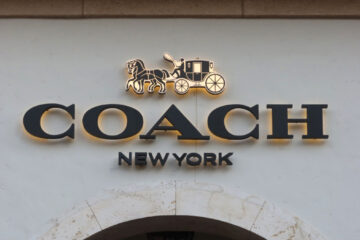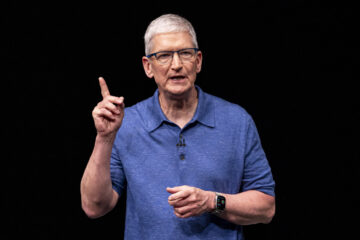The safety of driver-assist technology such as Ford’s BlueCruise and Tesla’s Autopilot and Full Self-Driving (FSD) have been under the microscope of the National Highway Traffic Safety Administration (NHTSA) following recent high profile crashes involving their use on the roads.
Related: Tesla shares soar as Elon Musk returns from China with FSD ‘Game Changer’
Tesla’s Trouble
A member of the media test drives a Tesla Motors Inc. Model S car equipped with Autopilot in Palo Alto, Calif.
The NHTSA has recently published the results of a nearly three-year probe into the safety of Tesla’s Autopilot and Full Self Driving technologies, which found that the software did a bad job at keeping drivers engaged. In its report, the federal agency looked into 956 crashes where it thought Autopilot and/or FSD played a role in, between January 2018 and August 2023 and gathered some very shocking data.
Of the 956 crashes, which included crashes that involved other vehicles colliding with Tesla vehicles, 29 deaths were recorded. The most severe of the recorded crashes were the 211 crashes that were attributed to “frontal plane of the Tesla struck a vehicle or obstacle in its path.” The NHTSA says that these crashes resulted in 14 deaths and 49 injuries.
The NHTSA said in its report that Tesla’s Autopilot and FSD was not designed to keep the driver engaged with the actual task of driving. In many cases they examined, the drivers of the Tesla vehicles in the recorded crashes leaned too heavily on the technology and lost focus on driving to the extent where critical evasive action was not able to be done in time to avoid a crash.
Drivers charge their Teslas in Santa Ana, Calif, on March 20, 2024.
MediaNews Group/Orange County Register via Getty Images/Getty Images
When reviewing the crash logs provided by Tesla, the agency found that the Tesla drivers involved failed to brake or steer out of the way of hazards, even though they had enough time to do so. In 59 of the crashes looked at by the agency, drivers had “five or more seconds” — enough time to react before hitting an oncoming object. However in 19 of the crashes, drivers had “10 or more seconds” to react to oncoming hazards in front of them.
“Crashes with no or late evasive action attempted by the driver were found across all Tesla hardware versions and crash circumstances,” NHTSA said.
The NHTSA also found a problem with the naming of Tesla’s driver assist software, and pointed out that ‘Autopilot’ and ‘Full Self Driving’ misleads drivers into thinking their Tesla vehicles are more ‘in control’ than what is in reality.
The Blues in Ford’s BlueCruise
2024 Ford Mustang Mach-E
Ford
Related: Feds probing another fatal crash that may involve a key Ford in-car technology
The microscope into driver-assist technology doesn’t affect just Elon Musk’s firm, as a Detroit Big Three brand has been pulled into the NHTSA’s crosshairs.
The NHTSA on April 29 said it has launched a preliminary investigation into Ford’s BlueCruise – the Blue Oval’s semi-autonomous, hands-free driver assist found on a variety of Ford vehicles like its Mustang Mach-E electric crossover.
The probe follows reports of fatal crashes involving the software in San Antonio and in Philadelphia, where Mustang Mach-E crossovers driving at night on major interstates collided with parked cars in their lanes. In initial investigations by the NHTSA’s Office of Defects Investigation (ODI), BlueCruise was found to be operating in both vehicles before they crashed.
People walk past the Ford Mustang Mach-E on the show floor at the North American International Auto Show in Detroit on Sept. 14, 2022.
The NHTSA’s initial probe is looking to see if a more widespread investigation into BlueCruise is needed, and if a recall to improve its safety is necessary.
BlueCruise is touted by Ford for letting the driver take their hands off the wheel for extended periods of time while watching the road — which is supplemented by its in-car driver monitoring cameras. Additionally, it can only be used on selected highways
The probe will look into the abilities of BlueCruise, as well as the effectiveness of the in-car driver monitoring cameras. Although BlueCruise is available on multiple Ford and Lincoln models, documents suggest that the probe will only focus on an estimated 130,050 units of 2021-24 Mustang Mach-Es.
More Business of EVs:
A full list of EVs and hybrids that qualify for federal tax creditsHere’s why EV experts are flaming Joe Biden’s car policyThe EV industry is facing an unusual new problem
Related: Veteran fund manager picks favorite stocks for 2024


